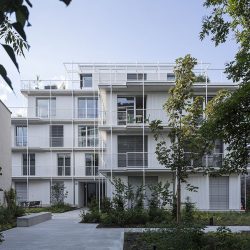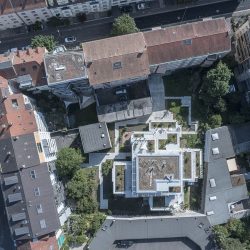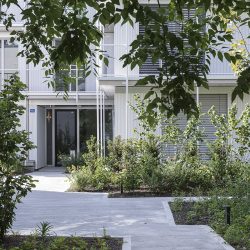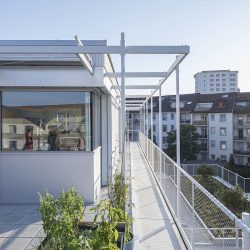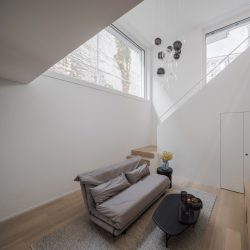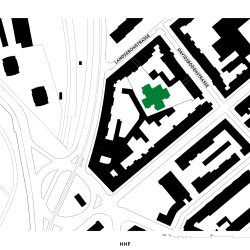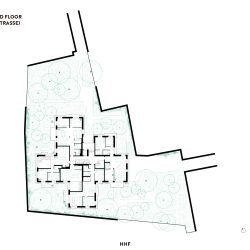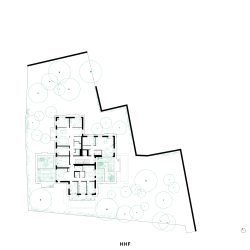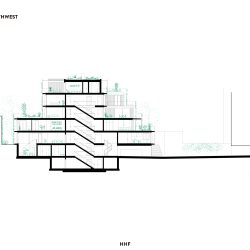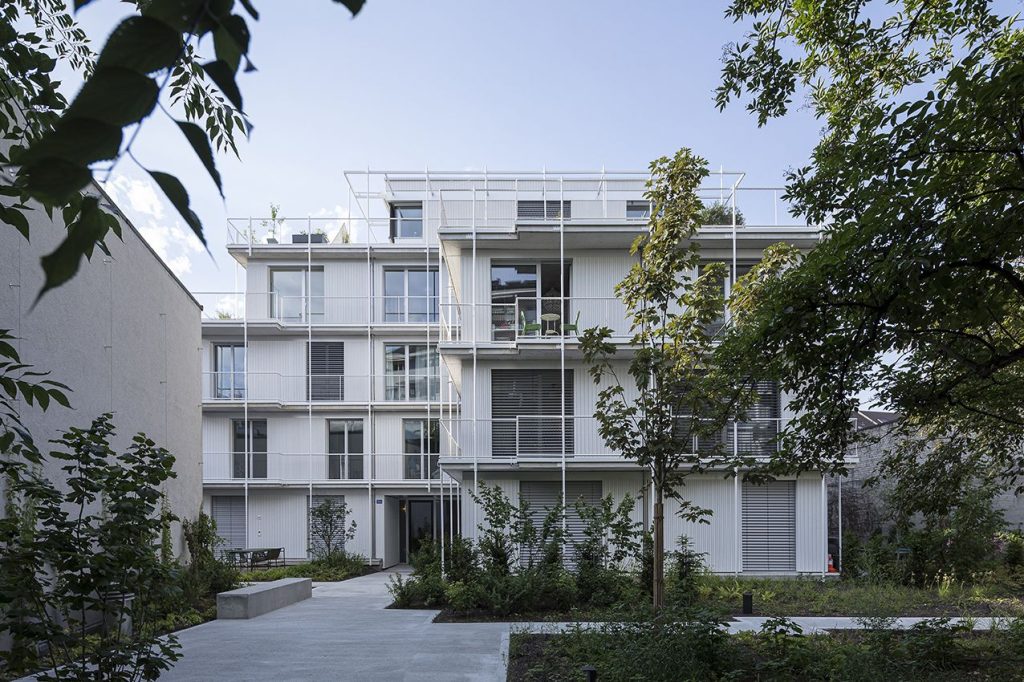
HHF has transformed a neglected courtyard with firewalls and parking spaces into 15 apartments and surrounding lush gardens. By combining “left-over” square meters of three existing parcels the project shows densification potentials by reclaiming seemingly unusable urban spaces. This 9-year project shows that it is possible to densify the city center of Basel if we gather around the same table. Owners, residents, neighbors and architects have moved the lines of 3 plots in order to make the heart of the block habitable. From there, the challenges of the site turned into the specificities of the project: the geometry of the plot, the proximity to the surrounding walls, the relationship with neighbors, the slope … were both the problem and the solution of the project.
A cross-shaped structure and building volumes with expansions and setbacks were the solution for ample sunlight, privacy and outside spaces. This also creates a series of private and semi-public courtyards that offer different moments of intimacy while also connecting the two topographic levels of the site.
This particular topography also has an impact on the accesses: the lower ground floor on Davidsbodenstrasse gives access to a semi-underground parking, while the upper ground floor on Landskronstrasse allows pedestrians to enter the site from an existing porch.
The white-painted spruce facade enfolds a central core and its own underground parking garage, which allows for 15 unique apartments radially organised around the core. The varied typologies span from 2.5 to 5.5 rooms – several with a maisonette solution – and living areas range from 52 to 151 m2.
A lot of attention has been given to gardening and greenery for all – and not only on the ground floor.
The terraces of the apartments offer up to around 40 m2 of gardening possibilities, giving the city courtyard unique qualities normally connected with single-family houses. Nature is further invited in by implementing greenery on the structure and its surroundings through plants and vines climbing the surrounding firewalls of neighbouring garages, as well as on the vertical balcony rods emphasizing the facade while creating a cloudy layer around the exposed building. The balcony layer itself underlines this buffer zone between the private and the public – undefined soft spaces that will be developed over time by the individual owners.
_

